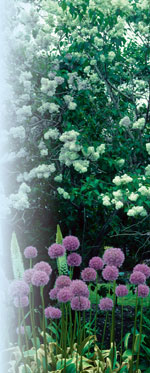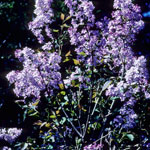In Search of Lilacs for the South
go.ncsu.edu/readext?235971
en Español / em Português
El inglés es el idioma de control de esta página. En la medida en que haya algún conflicto entre la traducción al inglés y la traducción, el inglés prevalece.
Al hacer clic en el enlace de traducción se activa un servicio de traducción gratuito para convertir la página al español. Al igual que con cualquier traducción por Internet, la conversión no es sensible al contexto y puede que no traduzca el texto en su significado original. NC State Extension no garantiza la exactitud del texto traducido. Por favor, tenga en cuenta que algunas aplicaciones y/o servicios pueden no funcionar como se espera cuando se traducen.
Português
Inglês é o idioma de controle desta página. Na medida que haja algum conflito entre o texto original em Inglês e a tradução, o Inglês prevalece.
Ao clicar no link de tradução, um serviço gratuito de tradução será ativado para converter a página para o Português. Como em qualquer tradução pela internet, a conversão não é sensivel ao contexto e pode não ocorrer a tradução para o significado orginal. O serviço de Extensão da Carolina do Norte (NC State Extension) não garante a exatidão do texto traduzido. Por favor, observe que algumas funções ou serviços podem não funcionar como esperado após a tradução.
English
English is the controlling language of this page. To the extent there is any conflict between the English text and the translation, English controls.
Clicking on the translation link activates a free translation service to convert the page to Spanish. As with any Internet translation, the conversion is not context-sensitive and may not translate the text to its original meaning. NC State Extension does not guarantee the accuracy of the translated text. Please note that some applications and/or services may not function as expected when translated.
Collapse ▲
Syringa vulgaris
J.C. Raulston ©
Many of us remember those fragrant lilacs that grew in the gardens of our parents or grandparents. But we may not remember all the problems that afflicted those plants. The plant that most of us identify as a lilac is the common lilac, Syringa vulgaris. Some varieties of common lilac will do pretty well in the North Carolina mountains. Unfortunately, these lilacs do not like the heat they encounter in the warmer parts of our state and often become afflicted with powdery mildew and borers.
That fact has led horticulturists to look at other species. ‘Miss Kim’, a cultivar of Syringa patula, has been publicized as a lilac that can take hot Southern conditions. Another lilac mentioned as a candidate is Syringa oblata var. dilatata, a variety of the Korean early lilac.
Dick Bir, a retired researcher and N.C. Cooperative Extension specialist, wanted to find lilacs that “look and smell like lilacs.” He conducted trials on lilacs for 20 years at the Mountain Horticultural Crops Research and Extension Center in Fletcher. These long-term observations led Bir to conclude that one of the best groups of lilacs for the piedmont and coastal plain of our state were the cultivars in the Syringa x hyacinthiflora group. This hybrid species is the result of crossing Syringa oblata and Syringa vulgaris. Many garden centers in the state will have some of these cultivars available this spring. As for Syringa oblata, Bir said it flowers too early to consistently avoid frost and freeze damage in the upper piedmont and mountains. For warmer areas, Syringa oblata selections and hybrids deserve a try.

Syringa oblata
J.C. Raulston©
In spite of Raleigh’s hot summers and mild winters, lilac species and cultivars can be observed at the JC Raulston Arboretum (JCRA). Look for many of them in the eastern sections of the JCRA.
For more information on the types of lilacs that do best in your area, contact your county Cooperative Extension agent.
Kevin D. Starr


